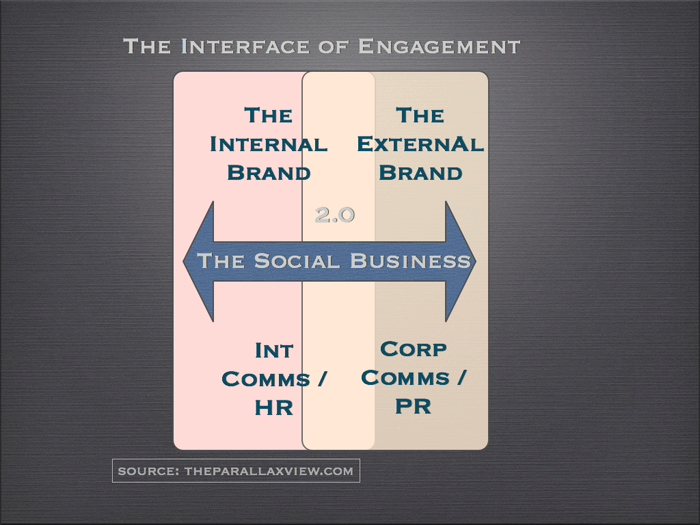As it’s that time of year again, I thought it as well to make some Social Business predictions for 2011. What I’m really looking at though are not Social Business predictions as such, but more tech trends and paths rolling forward. But here goes in any event.
1) Mobile devices will increasingly play a part in how the social business operates, particularly at two of its keenest nodal points, corporate and internal comms and secondly, the .com and the intranet. Key drivers are both from the business and consumer worlds – iPhones, the Blackberry and Adriod smartphones; tablets whether Cisco Cius, Blackberry Playbook and an other, a Black Swan of a mobile device that no one has thought of yet but which will be blindingly obvious when it appears. Taken together these will stimulate and drive demand for more social business operations. The reason why being that these tools open up new ways to collaborate and communicate that can only be answered and delivered by more socially organised businesses. They also offer ways to drive productivity and to make life a little more fun.
2) The twin consumer and business drives will reap a perfect storm when it comes to creating a more holistic approach to the social business. By this I mean the trend to ensure what used to be called ‘joined up thinking’ between here the collaboration, communication and marketing operations of the business. Companies that operate different and non-connected, even competing Social Media / Enterprise 2.0 programmes will notice the disconnect and lack of harmony between them.
There will be an increasing realisation that these activities need to be synchronised. This will create a new concept of the Brand that gets Marketing, IT and HR working together. (OK that’s a bit far-fetched). I can still see a tech-savvy enabling comms/collaboration team approach emerging and a recognition that a chaotic approach is not going to work for much longer – all the more so for companies that have a fragmented collaboration / intranet base.
3) The traditional concept of the firewall and the intranet/extranet will come under more and more strain as the tendencies outlined above play out. The intranet will become not something that you go to, but that can come to you. Infosec and Digital Security will need to rise to that challenge – they will need to support these events and make them secure.
4) Traditional and more established CMS vendors will bolt on social tools to their offerings. IT will like this, the purchaser will think it makes sense, the users will think it’s pants however. Never forget the users: bolt-ons rarely convince. How this will develop and pan out will be interesting – will there be competitive disadvantage or will the need get delivered by other mean….such as number 5 on my list?
5) Social Intranet Widgets will start to become interesting. We can see how these might work with Jive Apps Market. Using Open Social these should be able to integrate with other like-wise compatible devices. There’s also possibilities opening up with browser add-ons. I like the look of the Chrome add-on Layers. This aggregates social channels such as Twitter and Facebook into the one browser experience. I can see this working in the enterprise to draw a myriad types of content together.
Now these widget thangs could be independent of a specific social business platform – Jive, SharePoint 2010, Lotus Connections or whatever. The social business might be able to create a social potpourri of widgets, a sort of drag and drop social intranet.
6) Social Business ROI will come of age. We’ve seen plenty of data coming through from IDC, Accenture, UBM, McKinsey, SocialCast and more. This is something that I’ve been increasingly drawn to over the last two years I’ve been writing this blog and it’s something I plan to focus on more in the new year.
Good luck in 2011 – fare well and prosper.



